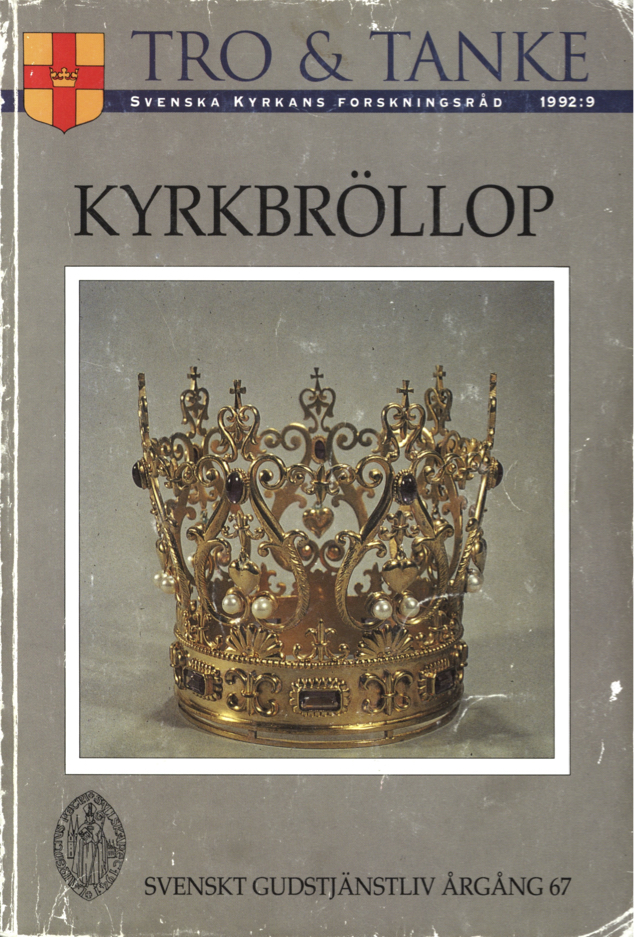Varför löften just i kyrkan? - om rätten bakom riten
Abstract
By a provision in the law of 1734, church wedding was made compulsory for contracting a marriage. Without the wedding - a marriage was not re cognized by law. Hereby, Church and Government could more easily con trol people’s cohabiting, and increase social control. With the above, however, a tradition was broken, which can be traced back, at least to 13th century provincial laws. In the 500 years before 1734, the law namely accepted two ways into marriage: engagement/fastening (fästning) followed by either wedding (vigsel) or marriage (giftermål); in both cases it was presupposed that the marriage be sexually consummated for full legal rights to ensue.
Research has usually maintained that the alternative with marriage (giftermål) has been a remnant of a Germanic initiation rite, whereas the wedding (vigsel) has been brought into our culture by Church. Engagement/fastening (fästning) meant that a preliminary marriage came about, which was more than engagement/fastening only. At the engagement/fastening, two families agreed both to marry two young persons together and to settle the economic terms of the future matrimony. After a while the engagement/fastening had to be consummated by marriage and the beginning of a sexual life together for the matrimony to reach full legal rights. The marriage meant, as many scientists have understood it, that the guardian (giftoman) - usually the father of the bride - gave the daughter away to the bridegroom and his family; a free choice of husband and wife was, on the other hand, hardly the case.
At the wedding, the bride and groom made their promises of marriage in public in front of the congregation at a ceremony in church. The aim of the wedding was to guarantee that the parties entered into wedlock while enjoying full liberty of choice and also to announce that matrimony had really come about. Hereby, the wedding became a means in the hands of the Church to break down the families’ influence when choosing a spouse.
In this article, the medieval legal sources are being interpreted in the light of the canonical marriage theory, which claimed that married life was to be entered into both by means of promises and cohabitation. The idea that married life could be entered into by way of marriage (giftermål), i.e. that the bride could be given away by the guardian, was incompatible with canon law. The precedere of provincial laws at the entering into marriage was, instead, so marked by canon law that a Germanic interpretation of the texts in question will not do. So, supposedly, marriage (giftermål) must have played a part other than being the foundation of married life. One hypothesis is being tried here, which implies that the marriage, seen in its context, contained a declaration by the guardian that the bride was married off on conditions enumerated in the marriage formula. Married life came about in a gradual process consisting of fastening/engagement, wedding, marriage, and the start of cohabitation. Of these four elements, marriage (giftermål) was a side issue. Its function was to announce, in front of the wedding guests gathered together, that the bride got married with the permission of her parents, and that the parents expected the bride to have the rights in her marriage which had earlier been agreed on. Marriage did not lay the foundation for matrimony. The wedding made it possible for the Church to check that the parties did marrv at full liberty of choice and with no impediment to marriage. From then on, nobody could doubt that the marriage had been entered into in an order which made it legally valid in all respects.
Downloads
Publicerad
Nummer
Sektion
Licens
© författarna, Laurentius Petri Sällskapet för svenskt gudstjänstliv samt Artos & Norma bokförlag. Det är tillåtet att kopiera och använda material ur Svenskt Gudstjänstliv för forskningsändamål om källan anges. För övriga ändamål kontakta respektive artikelförfattare samt förlaget. Särskilda restriktioner kan gälla för bildmaterial.


